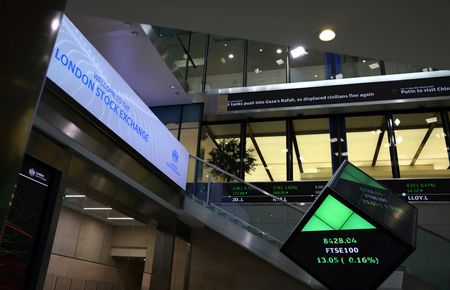By Paul Sandle and Muvija M
LONDON (Reuters) -Rolls-Royce expects cost cuts to keep cash outflows below its guidance of 2 billion pounds ($2.6 billion) this year, although the aero-engine maker’s hopes of a recovery in long-haul flying face a new challenge from the Omicron coronavirus variant.
The British company said on Thursday its large engine flying hours – a driver of revenue in its civil aviation business – had ticked up to 50% of 2019 levels, helped by a reopening of transatlantic routes.
Year-to-date, large engine hours have increased to 46% of 2019 levels, up from 43% in the first half, but set to miss the forecast it made in March for a recovery to 55% this year.
However, long-haul travel suffered another blow in recent weeks, with the emergence of the Omicron variant resulting in new travel restrictions.
“The pace of travel recovery remains uneven as countries are managing the ongoing challenges of the COVID-19 pandemic, and events of the last 10 days or so bring that to mind,” Chief Executive Warren East told investors and analysts.
Rolls-Royce shares, which are around the same level they were 12 months ago, were trading 3% lower in early deals.
The company has been hit hard by the pandemic due to its exposure to the airline industry, forcing it to raise money and take out huge loans.
East said Rolls-Royce was delivering on the things it was able to control.
It will have cut 8,500 jobs by the end of this year, with the pace of restructuring running ahead of its plan. A $2 billion sale of its Spanish unit, ITP Aero, also saw Rolls-Royce meet its 2 billion pound asset sale target in September.
The improved trading performance helped the more than century-old company return to positive free cash flow in the third quarter, in addition to reducing the outflow expected in the second half.
($1 = 0.7574 pounds)
(Editing by Subhranshu Sahu and Mark Potter)










